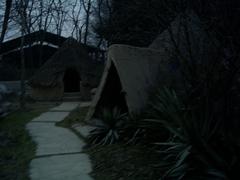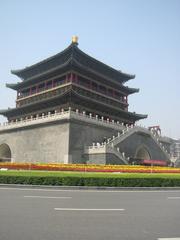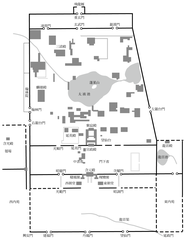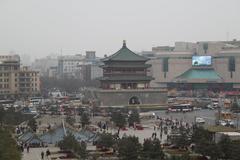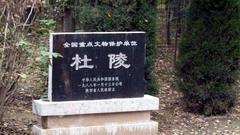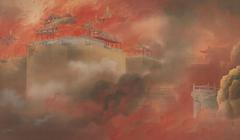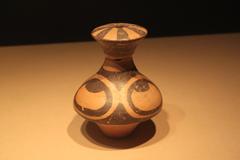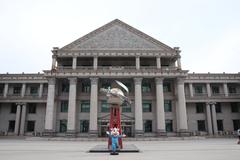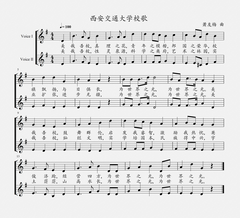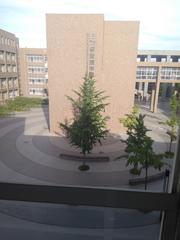Zhuquemen (South Gate) Visiting Hours, Tickets, and Historical Guide to Xi’an’s Iconic Gateway
Date: 04/07/2025
Introduction
Zhuquemen (朱雀门), also known as the Vermilion Bird Gate or South Gate, stands as one of Xi’an’s most prominent historical landmarks. As the grand southern entrance to the ancient Xi’an City Wall, Zhuquemen is a testament to Ming Dynasty military architecture, urban planning, and the city’s enduring cultural significance. The gate’s name, referencing the mythological Vermilion Bird, symbolizes the south, fire, and prosperity in Chinese cosmology, further enhancing its auspicious cultural value.
Today, Zhuquemen invites visitors to experience its formidable gatehouse, barbican, and the panoramic city wall. The site is also renowned for its immersive cultural events, illuminated night tours, and proximity to Xi’an’s vibrant historical core. This comprehensive guide provides detailed information on Zhuquemen’s history, architecture, visiting hours, tickets, accessibility, nearby attractions, and practical travel tips—ensuring a memorable and enriching experience in China’s ancient capital.
For up-to-date schedules, ticketing, and event information, consult official resources and travel platforms (xiandeeptour.com; TravelChinaGuide; thesunrisedreamers.com).
Table of Contents
- Historical Context of Zhuquemen
- Architectural Features and Preservation
- Cultural Symbolism and Modern Role
- Visiting Hours, Tickets, and Tours
- Getting to Zhuquemen (South Gate)
- Activities and Attractions
- Accessibility and Facilities
- Safety, Weather, and Visitor Etiquette
- Integration with Xi’an’s Historical Sites
- Notable Events and Festivals
- Frequently Asked Questions (FAQ)
- Responsible Tourism Practices
- Practical Travel Tips
- Visuals and Media
- Conclusion
- References
Historical Context of Zhuquemen
Zhuquemen is one of four principal gates along the Ming-era Xi’an City Wall, completed in the 1370s. Historically, it served as the main ceremonial entrance, welcoming emperors, foreign envoys, and Silk Road caravans. Its strategic location and imposing design reflect Xi’an’s status as a political and cultural crossroads and as a capital during numerous dynasties (xiandeeptour.com).
The gate’s name is derived from the Vermilion Bird (Zhuque), a mythological creature representing the south and prosperity in ancient Chinese cosmology. This symbolism imbued the gate with auspicious meaning and positioned it at the heart of imperial processions and state ceremonies.
Architectural Features and Preservation
Defensive Structure
Zhuquemen embodies Ming Dynasty military architecture, featuring:
- Gatehouse (城楼, chénglóu): Multi-storied with upturned eaves and traditional wooden brackets (dougong), atop a robust brick platform.
- Archway (门洞, méndòng): Large, grey brick arches designed for ceremonial processions and defense.
- Barbican (瓮城, wèngchéng): A semi-circular enclosure used to trap invaders.
- Drawbridge and Moat: Historically, a drawbridge spanned the moat, enhancing defense.
The city wall measures about 12 meters high and 15–18 meters wide, with Zhuquemen’s gatehouse rising several stories above (TravelChinaGuide).
Ornamentation and Symbolism
- Vermilion Bird Motifs: Decorative tiles and beams reference the mythological bird.
- Imperial Insignia: Plaques and banners highlight ceremonial significance.
- Double-Eaved Roof: Glazed tiles and upturned eaves serve aesthetic and functional purposes.
Conservation and Restoration
- Ongoing Restoration: Efforts since the 1980s have focused on structural stability and historical authenticity, including brick replacements and timber treatments (Global Times).
- Accessibility Improvements: Ramps, elevators, and improved pathways enhance visitor access.
- Community and International Involvement: Conservation is guided by municipal and national heritage policies, with input from local and international experts.
Cultural Symbolism and Modern Role
Zhuquemen remains a living symbol of Xi’an’s heritage. As the departure point for Silk Road caravans and a venue for imperial ceremonies, it reflects the city’s role as a center of exchange and renewal. Today, the gate is a hub for festivals, performances, and illuminated night tours, making it a vibrant gathering place for locals and tourists alike (thesunrisedreamers.com).
Visiting Hours, Tickets, and Tours
Visiting Hours
- Peak Season (March–November): 8:00 AM – 10:00 PM
- Off-Season (December–February): 8:00 AM – 6:00 PM
- Last Entry: Typically 30–60 minutes before closing. Hours may extend during festivals.
Ticket Information
- Standard Adult Ticket: Approx. 54 CNY
- Discounts: Available for students, children, and seniors (ID required)
- Purchase: On-site or via official online platforms (TravelChinaGuide)
- Guided Tours: Offered in multiple languages; audio guides available
Tip: Book tickets online during peak periods to avoid queues.
Getting to Zhuquemen (South Gate)
- Metro: Yongningmen Station (Line 2) is a short walk from the gate.
- Bus: Several city buses stop nearby.
- Taxi & Ride-hailing: Widely available, including Didi.
- Cycling: Bike rental stations at city wall entrances enable cycling tours (thesunrisedreamers.com).
Activities and Attractions
- City Wall Walks & Cycling: Experience the 13.7 km wall circuit with panoramic city views. Bike rentals range from 45–100 CNY for two hours.
- Cultural Performances: Enjoy Tang Dynasty music, dance, and martial arts during festivals.
- Night Illumination: The gate is beautifully lit at night, ideal for photography and strolls.
- Nearby Sights: Bell Tower, Drum Tower, Muslim Quarter, and Shuyuanmen Street are within walking distance.
Accessibility and Facilities
- Wheelchair Access: Main entrance is accessible; upper levels may have stairs.
- Restrooms & Shops: Modern restrooms, souvenir shops, and cafes are available.
- Information: Bilingual signage and info kiosks assist visitors.
- Parking: Available but limited during peak times; ride-hailing is recommended.
Safety, Weather, and Visitor Etiquette
- Safety: Xi’an is safe and well-patrolled. Keep valuables secure and be mindful in crowds.
- Weather: Summers are hot and humid (up to 37°C/99°F); bring water, sun protection, and light clothing. Spring and autumn are ideal for visits (travelchinawith.me).
- Etiquette: Respect the heritage site. Do not climb restricted areas or deface walls. Follow staff guidance during festivals and events.
Integration with Xi’an’s Broader Historical Sites
Zhuquemen is a perfect starting point for exploring Xi’an’s cultural heart. The Bell Tower, Drum Tower, Great Mosque, and Muslim Quarter offer a rich tapestry of history, architecture, and local cuisine (thesunrisedreamers.com).
Notable Events and Festivals
Zhuquemen features prominently in citywide celebrations, including the Lantern Festival, Chinese New Year, and the Xi’an City Wall Marathon. These events often include elaborate lantern displays, cultural performances, and community activities (xiandeeptour.com).
Frequently Asked Questions (FAQ)
Q: What are Zhuquemen’s opening hours?
A: 8:00 AM – 10:00 PM (peak season); 8:00 AM – 6:00 PM (off-season). Last entry is typically 30–60 minutes before closing.
Q: How much are tickets?
A: Standard adult tickets are approx. 54 CNY; discounts apply to students and seniors.
Q: Is Zhuquemen accessible for wheelchair users?
A: The main entrance is accessible, but some upper sections have stairs. Contact staff for assistance.
Q: Are guided tours available?
A: Yes, in English and Chinese. Audio guides also available.
Q: What is the best time to visit?
A: Early morning, late afternoon, or nighttime for cooler temperatures and fewer crowds.
Q: Are drones allowed?
A: Drone use is generally restricted. Special permits are required.
Responsible Tourism Practices
- Cultural Respect: Do not climb restricted areas or damage ancient structures.
- Support Locals: Shop at family-run stores and dine in local restaurants.
- Sustainability: Use public transport, bikes, or walk; minimize waste by carrying reusable bottles and bags.
- Photography: Ask before photographing people; avoid flash in sensitive areas.
- Waste Management: Use designated bins and participate in recycling initiatives (UNWTO Responsible Tourist).
Practical Travel Tips
- Language: Bilingual signage is common; translation apps are useful.
- Payments: Bring cash and payment apps (WeChat Pay, Alipay); some vendors may not accept foreign cards.
- Medical Services: First aid stations are located at major gates.
- Lodging: Accommodation ranges from hostels to luxury hotels within walking distance.
- Crowd Management: Visit early or late and buy tickets online to avoid long waits.
Visuals and Media
High-quality images and interactive maps enhance trip planning. Look for official virtual tours and downloadable resources on city tourism websites. Alt text suggestions: “Zhuquemen South Gate at sunset,” “Cycling along Xi’an City Wall near Zhuquemen,” “Night view of Zhuquemen illuminated in Xi’an.”
Conclusion
Zhuquemen stands as a vibrant symbol of Xi’an’s layered past and dynamic present. Its Ming Dynasty defenses, rich mythology, and lively cultural scene make it a must-visit for history enthusiasts and casual travelers alike. Thoughtful restoration ensures the gate’s legacy endures for future generations, while modern amenities and responsible tourism practices create a welcoming environment for all.
Plan your visit with accurate hour and ticket information, leverage guided tours for deeper insights, and explore the surrounding historical sites for a comprehensive experience. For the latest updates, travel tips, and immersive content, consider exploring related articles and dedicated travel apps like Audiala.
References
- Xi’an The Timeless Charm of an Ancient Capital, xiandeeptour.com
- Top Tourist Attraction and Places Map of Xi’an China, touristplaces.guide
- 3 Day Xi’an Itinerary, thesunrisedreamers.com
- Xi’an Travel Guide 2025, chinaexplorenow.com
- Baidu Baike: Zhuquemen
- Xi’an City Wall History, TravelChinaGuide
- Xi’an City Wall Restoration, Global Times
- Must-Visit Ancient Architectures in Xi’an, Chinatripedia
- Travel China in July Guide, travelchinawith.me
- UNWTO Responsible Tourist
